
Sanity is like a stack of blocks. One wrong move, and it all comes tumbling down.
Numerous tabletop RPGs on the market are designed to present a group of players with an atmosphere and situation designed to challenge them with hypothetical fantasy and simulated conundrums. Of these games, many are intended to bring a more horror-themed experience to its audience.
However, outside of imaginative storytelling, it can be hard to compel players with a tactile experience of anxiety that translates well with the tension of the game’s theme. It’s partly related to the simple physical act of players rolling dice. Tabletop RPGS don’t typically ask anything more of you and instead rely on the visualization you have as a player when immersing yourself in its horror.
What if there was a game that used a different medium than dice? What if the nature of this medium did more to speak to the knifes-edge feeling that these role-playing games try to convey?
What is Dread TTRPG
Dread is a Jenga-based TTRPG that focuses on storytelling, atmosphere, and increasing tension with every pull of a block. The experience of playing is nerve-wracking in a way that is both anxious and suspenseful, as one wrong move can bring everything down.
The game approaches character creation without rolls, ancestry, or class options, but with a questionnaire that provides the skeleton of the character. The player then forms that character to the games setting, and manifests the flesh and personality to their vision.
As in any tabletop roleplaying game, the host presents the scenario, and the players determine how their characters manage the situation. When attempting to do something beyond their normal capabilities, or under the duress of the moment, the player attempts to pull a block from the Jenga tower. A successful pull is a success in the game. … However, the players can choose failure by refusing a pull. This can be a devil’s bargain that causes greater risk in the future.
With each challenge, the tower of blocks becomes thinner, shakier, and ever more treacherous. Every tiny motion, every friction between blocks, and each finger quiver or drop of sweat could risk everything.
The moment the tower falls, the character in the hot seat is removed from the game. Whether that is death, dismemberment, or dysfunctional insanity, is unveiled by the GM or player, depending on whether the tower tumbles by accident or on purpose.
For this reason, it’s not a campaign-friendly TTRPG; it’s optimized for one-shots and single scenarios, much like a complete film or TV movie. No-episodes. Sequels are optional, but not included.
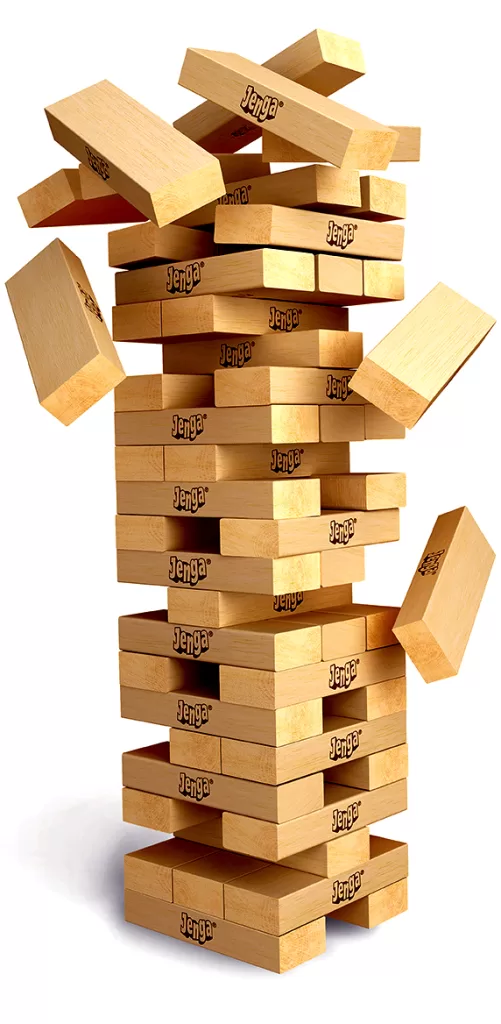
A Horror Story with Dreadful Themes
Dread’s intent is to provide a means of storytelling that savors the familiar emotions of many a horror novel, comic, TV show, or film. The contrast of character goals against a highly dangerous, fearful, or losing situation is where the games chief tension lies.
It is ultimately up to the table how they want to play the game, or what kind of scenario to run, but keep in mind that such stories often don’t have happy endings. This isn’t your sword and sorcery, lasers and spaceships kind of fantastical escape. This is a simulator of uncomfortable feelings that make stories of this genre thrilling or tense.
Your game can be a murder mystery, a ghost tale, a Wes Craven-style slasher, a wanton gorefest, a creepy supernatural thriller, or a Lovercraftian tale of unfathomable terror. In any of these cases, it’s important to know the boundaries and preferences of those at the table, lest the terror becomes too real.
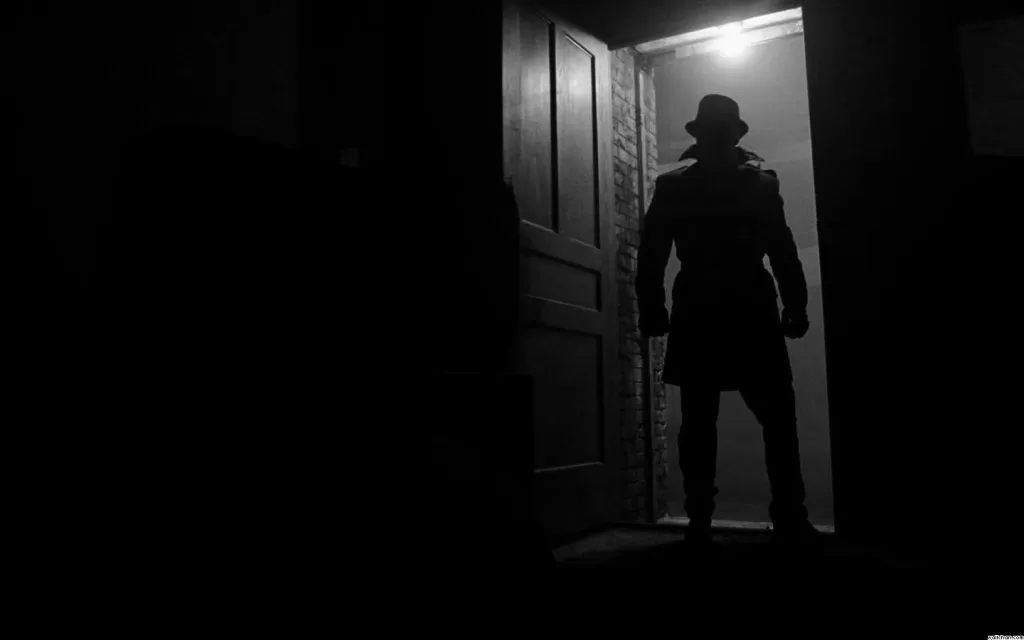
The Dread of Days Past: My Play Experience
One night of playing Dread has lasted in my memories for quite a time. In an upper apartment room east of Lake Harriet in Minneapolis, myself and three friends came together to delve into a 1950’s Lovecraftian horror story with unique characters of our own creation, all of which possess memories of a terrible act or unfathomable horror.
(Content Warning: Themes of veteran experiences, war, and PTSD)
In this 1950’s-themed telling of Cthulu mythos lore, I was a hard-boiled detective sleuthing in a background of melancholy jazz music, ala Jake Gittes from the movie Chinatown, or the game L.A. Noire. A veteran of WW2, my character experienced witnessed an unnamable horror during the Allies push through the Netherlands toward Germany.
You see, our fine servicemen were equipped with the M1 Garand. General Patton himself called it “the greatest battle implement ever devised”; a semi-automatic rifle with the ability to provide plenty of suppressing fire against the Jerrys. However, it had one quirk; one flaw. The firing of the final bullet would eject the cartridge with a loud ping. While it was a small inconvenience in some cases, in others, it signaled to the enemy that the soldier was out, and in need of reload.
During the Battle of the Bulge, our squad was pinned down under a steep bluff. My squadmate and childhood friend, and myself were left behind during a full retreat, and hunkered down in a foxhole. In a desperate push to cover my friend for their escape, I failed to reload my firearm.
A final bullet left my barrel, and a loud ping sounded. We were met with a barrage of return fire. Lead riddled my friend and comrade, moments before a mortar shell exploded above us, causing an avalanche that buried us both.
In the dark buried beneath the snow, I witnessed a ghoulish visage of my comrade, clawing towards me in vengeful range, speaking in an unfathomable tongue. In abject terror, a damning sensation of a dark fate now sealed assaulted the very depths of my mind.
Years later, as this half-drunk detective, working to forget the past, I took to a life of solving heinous crimes. However, in a few moments, an untimely high-pitched ring… a doorbell, a glass shattering, wind blowing chimes,… would send me into a deep existential panic.
As my fingers drew towards the block, our game master would speak almost provocatively about how my character’s body shook and went pale. In one case, he became violent, and two people had to hold him down. The DM enjoyed teasing me with the visuals while I strived to focus on the goddamn block, and not topple the whole tower!
Ultimately, in the height of the investigation, within the decrepit manor filled with cultists, an eldritch ritual, and unfathomable horrors, I finally elected for the tower to fall.
As a result, my character was forever thrown into a psychosis that would have him institutionalized, never being able to escape the memory.
(End Content Warning)
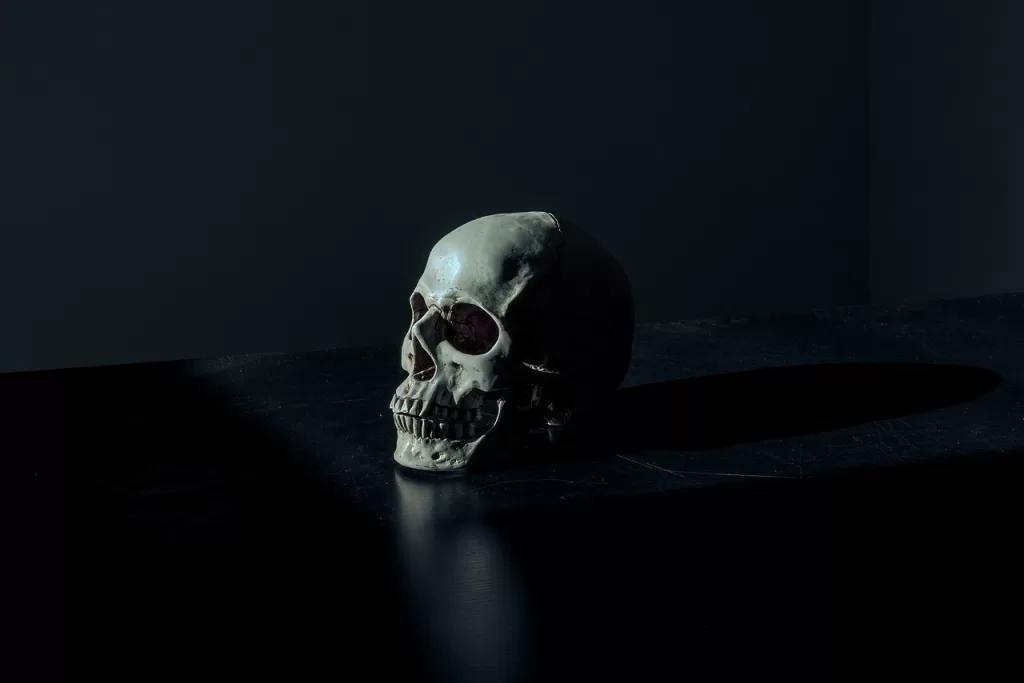
Some Critiques and Head Scratchers
It’s a fabulous game, and I have high appreciation for it, but there are a couple gripes I have with rules as written.
One downside is that players come to the table to … well… play the game. If a Jenga tower collapses, and a character is removed, then what does that player do while the other characters continue?
Thankfully, as Dread is a highly narrative game, the engagement of watching it unfold is not nearly as boring as sitting and watching a bunch of combatants in a crunchy dice roll combat session. However, the lack of activity can still drag the experience down.
Also, upon collapse, the tower is rebuilt from scratch, sans three pulls for every removed character. This essentially erases the majority of the strain or trauma sustained by characters other than the one who caused the collapse. You could suggest in-story that a characters demise heightens the resolve of the others, as they now know the stakes of failing, but unless the tower is rebuilt with more deliberate faults and pieces missing, it doesn’t quite carry the strain of the survivors going forward.
Finally, a word of caution. The games pacing requires careful attention. Some quick math: There are 54 blocks in a Jenga set. 18 level of blocks. According to multiple online sources, the average amount of pulls ranges between 25-40 (though the game itself claims 35-55). The book states that there should be about 3-6 pulls per scene. So, if we took the median value of total pulls and pulls per scene, the tower is likely to experience its first fall in about seven scenes.
In most TTRPGs, a single scene can take between twenty minutes to an hour of roleplaying. This can make for an incredibly long game for those who aren’t careful about the pacing.
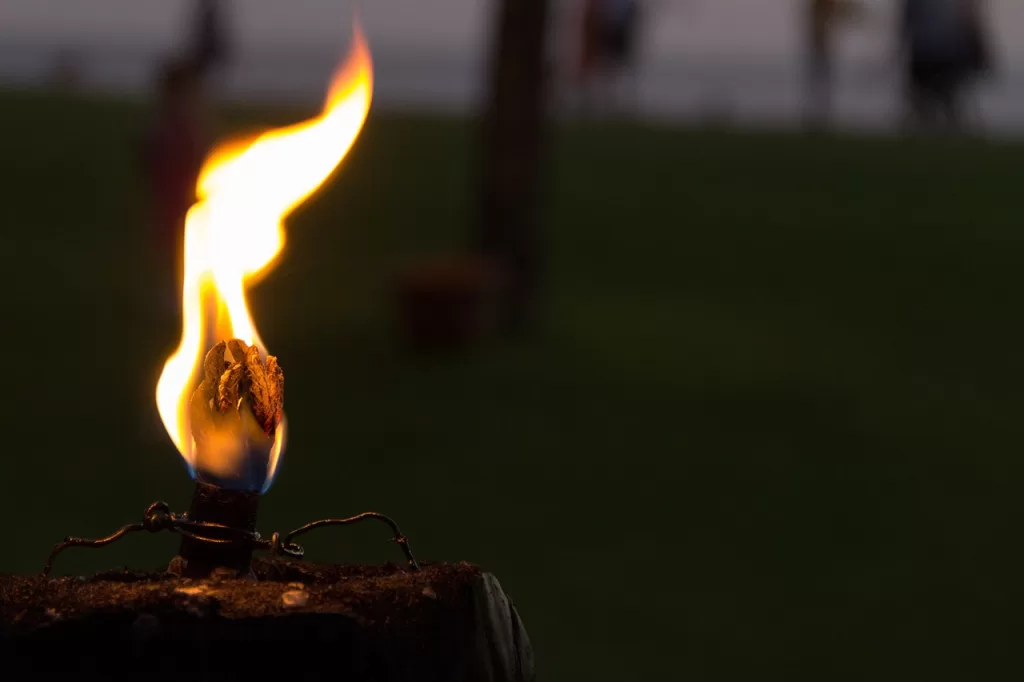
Protips for Your Table when Playing Dread
- Heroism isn’t the Goal
- If your goal is to win the day in a victorious feel-good experience, or vanquish the evil unscarred, Dread is not the game. This is not to say that you cannot do something heroic, or that your character can’t go out in an epic manner. However, that all takes a back seat to the utter mortality of the characters, and how the experience will doom them, or at least, forever alter them.
- Narrative First
- Therefore, instead of counting wins and accomplishments, the goal should be to tell a compelling story of a handful of characters trying their best to navigate and survive a situation that may threaten their resolve, or doom them. This opens the game up to a ton of storytelling potential which typical heroic TTRPGs lack. Getting the most out of the game means accepting and leaning into this arc as best you are able.
- Retain the Mystery
- The players can introduce their characters in advance, but the game really shines when the characters have backstories or secrets that are hidden from the other players. This provides an opportunity to unveil them with time, establish intrigue, and make the game feel more immersive.
- One and Done Out of the Box
- As stated before, it isn’t a game that is designed for long campaigns. That is not to say that some clever tweaking of the rules can’t make it so, and… if you’ve ever played Betrayal Legacy, you could very well turn it into a series of sessions moving through time, each one playing the heirs of the previous fallen.
- Your Character is (Most Likely) Going to Die
- This isn’t exactly Call of Cthulu; a game which is notorious for character certain death. However, every character will be struggling against, or walking towards their demise. Whether it happens by the games end or no, expect an untimely end to be in the cards.

Ways to Tweak your Game of Dread
The rules as written are balanced for a certain, default experience of Dread. However, not every game table has default-style players, and it may be a good idea to experiment, or adjust the following on a sliding scale.
- Shorter Scenes
- Due to the risk of a long session as mentioned earlier, a game of Dread needs to be planned in advance, with shorter and more compact scenes in order to deliver on its potential and get to closure in a meaningful timeframe.
- More Block Pulls
- Either as a substitute for shorter scenes, or in addition to them, the game needs to facilitate more pulls from the tower. As a rule of thumb, by the time the story is half over, someone should either be dead, or near dead.
- Less Stable Re-Assembly
- Three blocks pre-pulled for each fallen character may be too little for some games. A solution is to increase the number pulled blocks, or require a static three in addition to three for each fallen character.
- Change-Up the Medium
- If you feel Jenga isnt your favorite vessel, the rules encourage experimenting with other mediums that require some dexterity or skill, and a risk of catastrophic failure. While the rules suggest Pickup Sticks or Topple, I could imagine wooden building blocks that are built up and balanced instead of pulled. Other methods include a deck of cards whilst trying to avoid Aces, or stacking d6’s as high up as you can until one collapses. The Nintendo Wii had an underdog called Boom Blox that I’m very fond of, which would make a humorous alternative.
- Interaction After Character Death
- When the tower collapses, the player is either watching the rest of the game unfold without them, OR… you can try one of these suggestions to keep those players engaged.
- Give them control of one or more monsters. This is especially spicy if the demise itself is being converted into a monster, or drawn into a cult.
- When the tower collapses, the player is either watching the rest of the game unfold without them, OR… you can try one of these suggestions to keep those players engaged.

- Make them a ghost who helps the player, but at risk of them pulling each time they try to communicate. For tables that prefer more comedic horrors.
- Plan for secondary characters to fill in the gap. The main characters falling is still a losing condition, and once everyone is on their secondary characters, either all perish or flee.
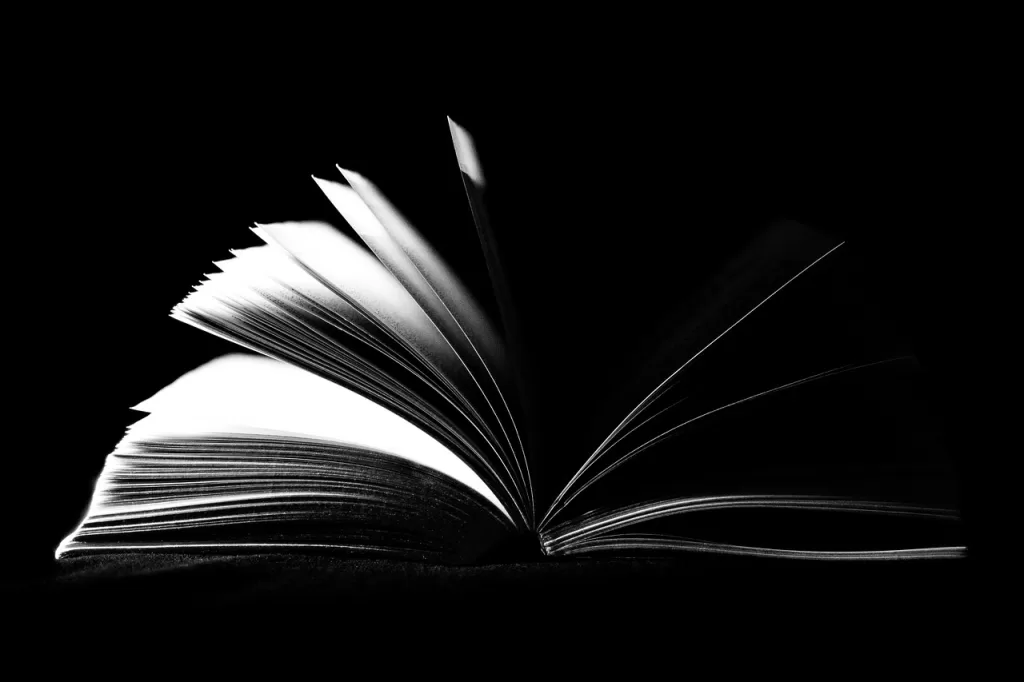
A Way to Take Things Further: Dread Legacy?
So, what IF you actually want to play Dread as a campaign? … It would seem difficult to do so, as the stakes are character demise at the end of a session. How could one create a compelling and awesome campaign out of this system?
Allow me to reference another game which has this answer built into its mechanics. Betrayal Legacy.

You may be familiar with the board game “Betrayal at House on the Hill”, an exploration and horror survival game that randomizes the haunted mansion and the scenario. In its wake, a follow-up game was created called “Betrayal Legacy”, a pre-written narrative version of the game that tracks characters across family lineages over decades and centuries.
Each session depicts the descendants of the characters before, returning to the mansion to uncover the mysteries of what happened in the past. This style of game is meant to be played over and over again until a final session that poses as an ultimate confrontation.
Now, take this similar idea about different people across the ages approaching a horrific mystery as it persists in the environment, and develops over time. The discoveries and actions of the past characters will remain to be uncovered by the new characters.
The grander story is not about single characters, but about much more … a dark secret that draws in victims, a place with a long and complex history, and groups of people approaching across the ages to face something beyond their capabilities.
Of course, there are multiple ways to make a campaign out of Dread if you wish to It simply requires extra work and planning. However, I recommend trying this experience for yourself!
Interested? Play Dread TTRPG yourself!
You can find a digital PDF version of the rulebook here on Drivethru RPG:
Also, check out Dread Tower for a series of resources and scenarios to run:
So what about you? Have you given Dread TTRPG a try? Or does it pique your interest?… If you enjoyed this piece, please consider supporting the site with a Ko-Fi donation, leave a comment about what you liked, and share this article in your group, forum, or network.
Here are some other articles I wrote you can check out on your journey with other TTRPGs:
- Axolotls, Genies, and Kaiju; a Quick TTRPG Zine Roundup #2 - May 19, 2025
- d100 City Encounters and Urban Sidequests - April 26, 2025
- Dirtbags! a Sci-Fi Shooter RPG: Gameplay Review! - March 23, 2025


